We're always stoked to cover a new product from Beyond Raw – this is a brand that can formulate with the best of them. We've covered several of their innovations, ranging from the incredibly-flavored Beyond Raw LIT Jolly Rancher flavors and the Nitrosigine-based Beyond Raw Pump.
We also recently introduced readers to their two new Dynamic Proteins, which are taking protein-enhancement technology to the next level. Now it's time to hone in on one of those two formulas, and what better way than the one built for major gains:
Beyond Raw Dynamic Gainer Featuring Velositol
Today we're talking about Beyond Raw's Dynamic Gainer, a formula that includes a very special protein-enhancing ingredient called Velositol.
Obviously, as a mass gainer, this product is going to be based on a generous dose of dietary protein designed to help optimize your body's anabolic response to a workout, plus some powerful auxiliary ingredients that can help improve utilization of that protein.
But to take it even further, we have Velositol, which is a huge force multiplier when it comes to protein. As seen in the research we're presenting, small amounts of Velositol can greatly increase the anabolic impact of whey protein supplements.
Beyond Raw Dynamic Gainer also uses both whey and casein as the protein base as well as collagen -- we'll explain some of the benefits of going with this blend, moving toward a more naturalistic amino acid composition.
Beyond the 50 grams of protein that's been IO- and Velositol-enhanced, we also have a full 5 gram dose of creatine monohydrate, 3 grams of HMB, MCTs, and 130 grams of carbohydrates to make for a total of 810 calories, if you choose to take all four scoops totaling 217 grams of total powder! At a full serving, This behemoth is obviously not messing around.
Let's get into this epic formulation, but first, check the PricePlow news and deals:
Beyond Raw Dynamic Gainer – Deals and Price Drop Alerts
Get Price Alerts
No spam, no scams.
Disclosure: PricePlow relies on pricing from stores with which we have a business relationship. We work hard to keep pricing current, but you may find a better offer.
Posts are sponsored in part by the retailers and/or brands listed on this page.
This area is reserved for Team PricePlow's upcoming videos.
Subscribe to our channel and sign up for notifications so you catch it when it goes live!
Beyond Raw Dynamic Gainer Macros
If you can get all four scoops down (totaling 217 grams), you'll be presented with the following epic amounts of nutrition:
-
Calories: 810
-
Protein: 50g
-
Carbohydrates: 130g
-
Dietary Fiber: 8g
-
Total Sugars: 7g
-
-
Total Fat: 5g
-
Saturated Fat: 4g
-
Clearly, Beyond Raw is serious with this one. So let's get into how it's built:
Beyond Raw Dynamic Gainer Ingredients
In a single 4-scoop (217 gram) serving of Beyond Raw Dynamic Gainer, you get the following:
-
Dietary Protein as Whey Protein Isolate, Micellar Casein, and Milk Protein Isolate – 50,000 mg
You've probably noticed that whereas most protein supplements use either whey or casein as their primary protein source, Beyond Raw Dynamic Gainer uses both. Note that milk protein isolate is simply the naturally occurring whey+casein fraction in milk.
The simultaneous use of both proteins has become a trend in the industry on-and-off over the years, and it's one we fully support. Let's dig into whey, casein, their differences, and why combining these two proteins is so effective for body recomposition.
Why take a protein supplement?
First, let's address the obvious question: Why supplement with protein at all? The short answer is that the amount of protein needed for optimal recovery, strength gains, and muscle growth is way higher than most people think.[1]
The United States Department of Agriculture's Recommended Daily Allowance (RDA) for dietary protein is 0.8 grams of protein per kilogram of body weight, which converts to a paltry 0.36 grams per pound.[2] We want to stress that this recommendation is not calibrated for optimal gains from exercise – it's intended to help sedentary individuals prevent age-related muscle loss.
Active people — those who are trying to increase muscle mass — require more than this. The latest research indicates that gains from additional protein intake begin to diminish around 0.75 grams of protein per pound of body weight per day.[3]
An excellent study by Dr. Guoyao Wu of Texas A&M University in 2016 provides a great synopsis of daily protein requirements:
"Based on short-term nitrogen balance studies, the Recommended Dietary Allowance of protein for a healthy adult with minimal physical activity is currently 0.8 g protein per kg body weight (BW) per day. To meet the functional needs such as promoting skeletal-muscle protein accretion and physical strength, dietary intake of 1.0, 1.3, and 1.6 g protein per kg BW per day is recommended for individuals with minimal, moderate, and intense physical activity, respectively."[4]
For an active 200 pound man to reach optimal protein intake on a three-meal-per-day schedule, he'd need to consume about 50 grams of protein per meal. As luck would have it, that's the exact dose of protein in a single serving of Beyond Raw Dynamic Gainer.
-
Whey Protein Isolate (io-Optimized)
Whey has long been the most commonly used protein in the supplement industry, and there's good reason for that: whey is extremely bioavailable compared to most other dietary proteins. The body absorbs and utilizes nearly 100% of ingested whey.[5]
Plant-based proteins, in particular, are rather unimpressive compared to whey, coming in at roughly half the bioavailability. Whereas whey protein has a protein digestibility–corrected amino acid score (PDCAAS) of 1.00, pea protein (a common plant-based alternative) clocks in at only 0.597.[5]
Compared to other proteins, whey is also good at stimulating insulin secretion,[6] which is actually a good thing immediately after a workout. That's because insulin can drive muscle protein synthesis,[7] which is the whole reason people take a protein supplement in the first place.
Interestingly, although whey is significantly insulinogenic, it has nevertheless been shown to increase insulin sensitivity (i.e., decrease insulin resistance) thanks to its powerful antioxidant effect.[8] As whey is high in cysteine, the main precursor to endogenous antioxidant compound glutathione (GSH), supplemental whey can help increase GSH production.[9]
Finally, whey contains a large amount of essential amino acids, the aminos that your body can't manufacture on its own and must obtain complete from food and supplements.[10]
The upshot of all this is that taking a whey supplement can increase strength and muscle gains from exercise.[10-13]
Beyond all of this, the whey protein isolate is also enhanced with Ingredient Optimized's io Technology -- you can read the details about this technology in our article titled ioWhey Comes to Two Beyond Raw Dynamic Proteins at GNC. The long story short is that this natural protein enhancement technology improves the structure of the protein molecules, enabling better absorption, increasing plasma amino acids!
But there's not just whey in here:
-
Micellar casein
Besides whey, we also have micellar casein. Together, whey and casein comprise the protein fraction of milk.[14] Typically, whey and casein are manufactured by separating the milk protein fraction into each. So, by using both (plus a little unseparated milk protein), Beyond Raw Dynamic Gainer offers an amino acid profile much closer to the natural protein composition of milk.
Given the way that human metabolism is calibrated for the natural inputs of our ancestral environment, it probably won't surprise you too much to learn that the combination of whey and casein, according to numerous studies, is better at building muscle than either whey or casein on their own.
In one 2016 study, for example, following exercise, rats were randomized to receive either whey, casein, or milk protein. The researchers then measured how quickly the rats created new muscle. They used that data to calculate the total effect of each protein treatment on muscle growth.[15]
They concluded that milk protein, which naturally contains casein and whey, was better at stimulating muscle growth than either whey or casein alone.[15]
Fractional synthesis rate (FSR), the standard measure of muscle synthesis rate, peaks at different times for whey (WP), casein (CA), and milk protein (MP).[15]
For an easy way to understand this effect, we need to look at the timing of how whey and casein impact muscle synthesis. As it turns out, they cause muscle growth to peak at different times[15] – whereas whey is rapid-acting and causes muscle synthesis to peak quickly, casein acts over a greater length of time for a longer, more gradual peak.
Thus, taking both at the same time gives you the best of both worlds – a higher sustained rate of FSR throughout the entire post-workout recovery window. Whey and casein emphasize different anabolic growth hormones – whereas whey tends to be more insulinogenic, casein mostly stimulates insulin-like growth factor (IGF-1) production.[16] These two hormones work together for optimizing the anabolic response, as shown in an animal study where downregulating either insulin or IGF-1 significantly reduced the amount of protein synthesis in mice following a meal.[17]
-
Bovine Collagen Peptides – 5,000 mg
Collagen is in this formula for two reasons: it increases muscular hypertrophy and improves metabolic health.
Increases muscular hypertrophy
First, although collagen has not traditionally been thought of as an anabolic protein, at least two recent randomized controlled trials have shown that collagen supplementation may actually support muscular hypertrophy (i.e., gains) following exercise.[18,19]
Young athletes taking collagen (COL) gained more than the placebo (PLA) group in body mass (BM), fat free mass (FFM), the squat test (SQ), deadlift (DL), bench press (BP), rowing (R), and isometric strength testing (MViC). They also gained less fat.[18]
In one of these studies, researchers controlled for overall protein intake. They recorded that their collagen group was eating 1.66 g/kg/day and the placebo group 1.86 g/kg/day. Despite the fact that the placebo group was actually getting more protein overall, the collagen group still gained more muscle and strength, and less fat.[18]
This is a very new area of research, so the exact mechanism behind collagen-driven hypertrophy remains to be elucidated, but the authors of this study hypothesize that collagen's impact on tissue surrounding muscle – the extracellular matrix (ECM) – probably improves muscle function and, indirectly, the hypertrophic response.[18] More specifically, they point out that collagen is crucial for tendon formation, and that had this study been done with exercises that are more tendon-reliant, the researchers suspect that the collagen group would have done even better.[18]
To support this hypothesis, the authors cite a study in which collagen supplementation was found to significantly improve recovery after jumping, which is a tendon-heavy exercise.[20] The second inset chart summarizes the findings of this study: not only did the CP group have less muscle soreness, they actually recovered performance faster and were in a better mood post-exercise than the control group![20]
Muscle soreness, pressure pain threshold (PPT), countermovement jump (CMJ) height, maximal isometric voluntary contraction (MIVC) and Brief Assessment of Mood Adapted (BAM +) at baseline (BL), pre-exercise (Pre), post-exercise (Post), 24 h and 48 h post-exercise after 20 grams of collagen peptides (CP) or control (CON). The collagen group did better on every metric.[20]
Now, at 5 grams of collagen, we're not getting as much as in the study here, but there's some growing evidence that collagen supplements aren't just for hair, skin, nails, and joints. If you can perform better, then it can support a long-term training regimen with higher volumes over time.
Improves metabolic and hormonal health – glycine vs. methionine
At least part of gylcine's ability to improve recovery can probably be explained by its impact on metabolic and hormonal health.
To understand why, we need to discuss the relationship between two amino acids, glycine and methionine. Eating too much methionine, relative to glycine, can increase the body's production of cortisol, a stress hormone with catabolic effects.[21,22] If cortisol rises too high, it can definitely interfere with muscle growth.[23] So, we want to keep cortisol under control by optimizing our methionine-to-glycine ratio.
Fortunately, collagen is a fantastic source of glycine, and upping glycine intake via collagen supplementation can help downregulate stress hormones.[22]
Additionally, the body needs glycine to regulate homocysteine, an amino acid byproduct of methionine metabolism. If homocysteine levels rise too high, it can wreak havoc on cardiovascular health.[24,25]
-
-
Creatine Monohydrate – 5,000 mg
Creatine supplies your muscles with usable energy in the form of adenosine triphosphate (ATP). In this way, creatine can improve athletic performance, recovery, and muscle gains.
Creatine is a phosphate donor, meaning it delivers phosphate groups to your cells' mitochondria, the organelles responsible for ATP synthesis. Your mitochondria then add those phosphate groups to adenosine diphosphate (ADP) molecules, thus converting ADP to ATP.[26-29]
Research on creatine has found that it can improve:
- Power output[30,31]
- Total weight gain[31]
- Lean mass gain[31-35]
- Sprinting speed[36-38]
- Cellular hydration[39]
- Fatigue[40-43]
- Feelings of well-being[44-46]
- Testosterone production[47-51]
- Bone density[34]
Since meat and other animal products are the best dietary sources of creatine, vegans and vegetarians should definitely consider creatine supplementation.[52,53] Research also shows that creatine is safe and effective for healthy adults and adolescents.[54-58]
-
Calcium 3-Hydroxy-3-Methylbutyrate (HMB) – 3,000 mg
You've probably heard of the branched-chain amino acids (BCAAs). Well, HMB is a BCAA metabolite with some very interesting signaling functions that are good for accelerating recovery and increasing muscle gains following high-intensity exercise.[59]
HMB is responsible for leucine's anti-proteolytic effects
Of the three BCAAs, leucine is the most anabolic. It's common knowledge that leucine supplementation can increase muscle and strength gains,[60-62] which is why BCAA blends typically have more leucine than isoleucine or valine.
HMB positively affects a number of important metabolic pathways that aid in muscle growth, fat loss, and recovery from exercise.[63]
The key to understanding leucine's unique benefit is knowing that it's anti-proteolytic,[64] which means that it helps prevent existing muscle tissue and proteins from breaking down. Researchers discovered that huge doses of leucine are required in order to hit the point of diminishing returns on this, which led to speculation that a certain leucine metabolite is probably behind its ability to preserve muscle.[59,65]
As it turns out, HMB is that metabolite. Only about 5% of ingested leucine is turned into HMB.[66] So, that explains why such huge doses of leucine are needed. Leucine and HMB have both been shown to help trigger the anabolic response and prevent proteolysis by activating mammalian target of rapamycin (mTOR).[63]
But animal studies have also found that HMB can increase the production of two anabolic hormones: growth hormone (GH) and insulin-like growth factor (IGF-1).[67]
Human HMB studies
Research in humans has found that HMB supplementation can:
- Increase muscle growth and strength gains from resistance training[68-70]
- Increase aerobic endurance and work capacity[71-74]
- Diminish muscle damage and soreness after exercise[68,75-78]
- Speed up recovery after exercise[79]
- Promote lean body composition[80]
HMB deserves our respect
Shawn Baier joins PricePlow Podcast Episode #093 to talk HMB.
Unfortunately, HMB was plagued by controversy when it hit the supplement market in the 2000s. In retrospect, this dismissal looks premature. A lot of the drama was caused by a study that was published claiming that athletes supposedly saw no benefit from HMB supplementation,[81] but upon further review, it turned out that the supplement the researchers used contained zero HMB.[82] This means the original study was illegitimate,[83] but the researchers never retracted it, and it still lives on PubMed, spreading disinformation to this day.
A recent research review published by the International Society of Sports Nutrition (ISSN) also established that early negative studies on HMB supplementation were methodologically flawed. Among other things, the exercise used in those studies was not intense enough for the benefits of HMB to appear, and study participants often did not comply with prescribed treatments.[59]
Long story short: HMB has withstood a ton of fraudulent attacks, and while it's not going to give drug-like gains, it does provide great benefits when training hard.
-
Amylopectin (Waxy Maize) Chromium Complex (Velositol) – 2,000 mg
Now, it's time to take the protein component in Beyond Raw Dynamic Gainer to a whole new level.
Made by Nutrition 21, the experts in Chromium and Insulin management, Velositol can boost Muscle Protein Synthesis by using chromium and a 'tickle' of insulin-spike from amylopectin!
Velositol, developed by Nutrition21, is a patented complex of the mineral chromium and amylopectin starch.[84,85] When combined, these can amplify the body's anabolic response by altering insulin signaling. Put simply, the amylopectin increases insulin secretion, while the chromium simultaneously makes muscle cells more sensitive to that insulin.[86]
What is Velositol: a background
Known as a muscle growth activator, Velositol is best used with protein to improve strength and power outcomes by boosting muscle protein synthesis (MPS). MPS is key to effective muscle growth, lean mass gains, and muscle recovery.
Thanks to its chromium component, Velositol enhances insulinogenic function. When taken with protein in a post-workout setting, it may increase (or enhance) amino acid uptake for working and recovering muscles, helping you get more out of your protein.
The introduction of Velositol made complete sense, since Nutrition21 is well-known for Chromax, a trademarked form of chromium picolinate that's been tested in over 50 peer-reviewed scientific studies.[87] Needless to say, Nutrition21 is the de-facto industry expert when it comes to chromium science, and there is science supporting Velositol as well:
The Velositol research
A study published in 2017 showed that the combination of Velositol and whey protein stimulated muscle protein synthesis much better than whey protein alone – four hours after ingestion, the Velositol and whey group had a significantly greater fractional synthesis rate compared to the whey group.[88]
What's incredible is that Velositol is able to optimize the insulin spike shortly after consumption, but does not increase blood glucose levels:
Insulin and Blood Glucose curves after post-workout Velositol + Whey Protein administration. Insulin is boosted yet blood glucose remains steady.[88]
It's worth noting that the dose of whey used in the 2017 study – 6 grams – was far smaller than the 50 grams in Beyond Raw Dynamic Gainer. We expect to see an even bigger effect size with a bigger protein dose.
Research from 2021 shows that Velositol in combination with 15g of whey protein boosts exercise performance![89]
On that same train of thought, researchers sought more data with larger protein doses, publishing another trial in 2021 that provided actual athletic endpoints. It involved three different treatment groups:[89]
- 15 grams of whey protein + 2 grams of Velositol (V15P)
- 15 grams of whey protein alone (15P)
- 30 grams of whey protein alone (30P)
After 8 weeks of intake combined with resistance training, the V15P group outperformed the 15P group, which probably isn't a surprise. What is surprising is that the V15P group also did better than the 30P group. That is, a mere 2 grams of Velositol added to 15 grams of whey protein had a bigger positive effect than twice that amount of protein with no Velositol.[89] The table below shows what the numbers looked like.
Changes versus baseline:[89]
Squat reps to failure Vertical jump power (Watts/kg body weight) Vertical jump height (cm) V15P +25.3 +2.1 +8.7 15P +12.0 +0.4 +1.6 cm 30P +13.9 +0.3 +0.9 cm Now think about what might happen if you add 2 grams of Velositol to the whopping 50 grams of protein in one serving of Beyond Raw Dynamic Gainer.
We consider the addition of Velositol to weight gainers to be a slam-dunk case -- the addition of a well-tested chromium-based ingredient to a product rich in both protein and carbohydrates makes perfect sense. You can read more about it in our article titled "Velositol: Enhancing Muscle Protein Synthesis with Science". And that's not all GNC added:
-
Medium-Chain Triglyceride (MCT) Powder
Dynamic Gainer isn't all carbs, protein, and their enhancements, though. We also have some healthy fats:
Medium-chain triglycerides (MCTs) are a type of dietary fat consisting of fatty acids 6 to 12 carbon atoms long.[90-93] Medium-chain fatty acids are between short-chain fatty acids, which are less than 6 carbon atoms in length, and long-chain fatty acids, which are more than 12 carbon atoms long.
MCTs are metabolized by the liver, which converts them directly into ketones.[94] The cool thing about this metabolic pathway is that it takes place regardless of your current blood glucose level. In other words, MCTs are a way to reap some benefits of ketosis, without actually being in ketosis.
Because MCTs can provide your body with clean-burning energy, MCT supplementation can speed up metabolism and fat loss, enhance cognitive performance, and suppress appetite.[90-93]
-
Lactase (from Aspergillus oryzae) – 395 mg
Lactase is a digestive enzyme responsible for breaking down lactose, the infamous sugar that occurs naturally in milk. Believe it or not, lactase supplements can actually render some lactose intolerant people capable of digesting lactose – not permanently, of course, but so long as lactase is consumed alongside lactose.[95]
Beyond Raw Dynamic Gainer does contain some powdered milk, as well as whey and casein, which have both been shown to contain trace amounts of lactose. Thus, Beyond Raw has included some lactase just to minimize the chance of any given consumer having issues with the very small amount of lactose present.
-
Bromelain (from Pineapple [Ananas spp] Stem) – 5 mg
Bromelain is a digestive enzyme that occurs naturally in pineapple and helps digest a wide variety of dietary proteins. Bromelain supplementation has been shown to improve the intestinal bioavailability of antioxidants and other nutrients.[96,97]
Bromelain has also been shown to help decrease knee pain and allergy symptoms.[98,99]
-
Vitamins & Minerals
Since micronutrient deficiencies have the potential to interfere with muscle growth, Raw has these vitamins and minerals:
-
Vitamin A (as beta-carotene) – 375 mcg (42% DV)
-
Vitamin C (as ascorbic acid) – 17 mg (19% DV)
-
Vitamin D (as cholecalciferol – 12.5 mcg (63% DV)
-
Vitamin E (d-alpha-tocopheryl acetate) – 5 mg (33% DV)
-
Thiamin (Vitamin B-1) (as Thiamin Mononitrate) – 1.1 mg (92% DV)
-
Riboflavin (Vitamin B-2) – 1.1 mg (85% DV)
-
Niacin (as Niacinamide) – 14 mg (88% DV)
-
Vitamin B6 (as Pyridoxine Hydrochloride) – 1.3 mg (76% DV)
-
Folate (Folic Acid 120 mcg) – 200 mcg DFE (50% DV)
-
Vitamin B12 (asCyanocobalamin) – 2.5 mcg (104% DV)
-
Biotin (as d-biotin) – 79 mcg (263% DV)
-
Pantothenic Acid (as Calcium D-Pantothenate) – 6 mg (120% DV)
-
Calcium (dicalcium phosphate and calcium amino acid chelate) – 990 mg (76% DV)
-
Phosphorus (as Tricalcium Phosphate & Dipotassium Phosphate) – 430 mg (34% DV)
-
Iodine (as Potassium Iodide) – 110 mcg (73% DV)
-
Magnesium (as Magnesium Aspartate) – 100 mg (24% DV)
-
Zinc (Zinc Citrate) – 5 mg (45% DV)
-
Selenium (L-Selenomethionine) – 21 mcg (38% DV)
-
Copper (as Cupric Oxide) – 0.3 mg (33% DV)
-
Manganese (as Manganese Sulfate) – 0.8 mg (35% DV)
-
Chromium (as Chromium Histidinate, Chromium Picolinate & Chromium Nicotinate Glycinate Chelate) 1000 mcg (2857% DV)
-
Molybdenum (as Molybdenum Glycinate Chelate) – 22 mcg (49% DV)
-
Sodium – 560 mg (24% DV)
-
Potassium – 750 mg (16% DV)
-
Flavors Available
Beyond Raw Dynamic Gainer launched in three flavors: Chocolate Eclair, Strawberry Shortcake, and Vanilla Cheesecake. Here's what PricePlow sees available right now:
Conclusion: A Mass Gainer for the Ages
Again, the use of whey, casein, and collagen is pretty cool, but as you can probably tell from the research we discussed, combining Velositol with a whopping 50 gram dose of protein should yield some pretty amazing results.
Beyond Raw's Dynamic Gainer is easily the go big or go home weight gainer of the year. Not everyone needs to take all four scoops, but if you do, you're going to get 810 calories that's loaded with goodies. GNC went all out here, from the Velositol to the creatine to the HMB to the io-enhanced protein, there's not a whole lot more to say here than "bottoms up".
If you're the kind of person who trains hard enough to "earn your carbs", this one's definitely worth a run.
Beyond Raw Dynamic Gainer – Deals and Price Drop Alerts
Get Price Alerts
No spam, no scams.
Disclosure: PricePlow relies on pricing from stores with which we have a business relationship. We work hard to keep pricing current, but you may find a better offer.
Posts are sponsored in part by the retailers and/or brands listed on this page.
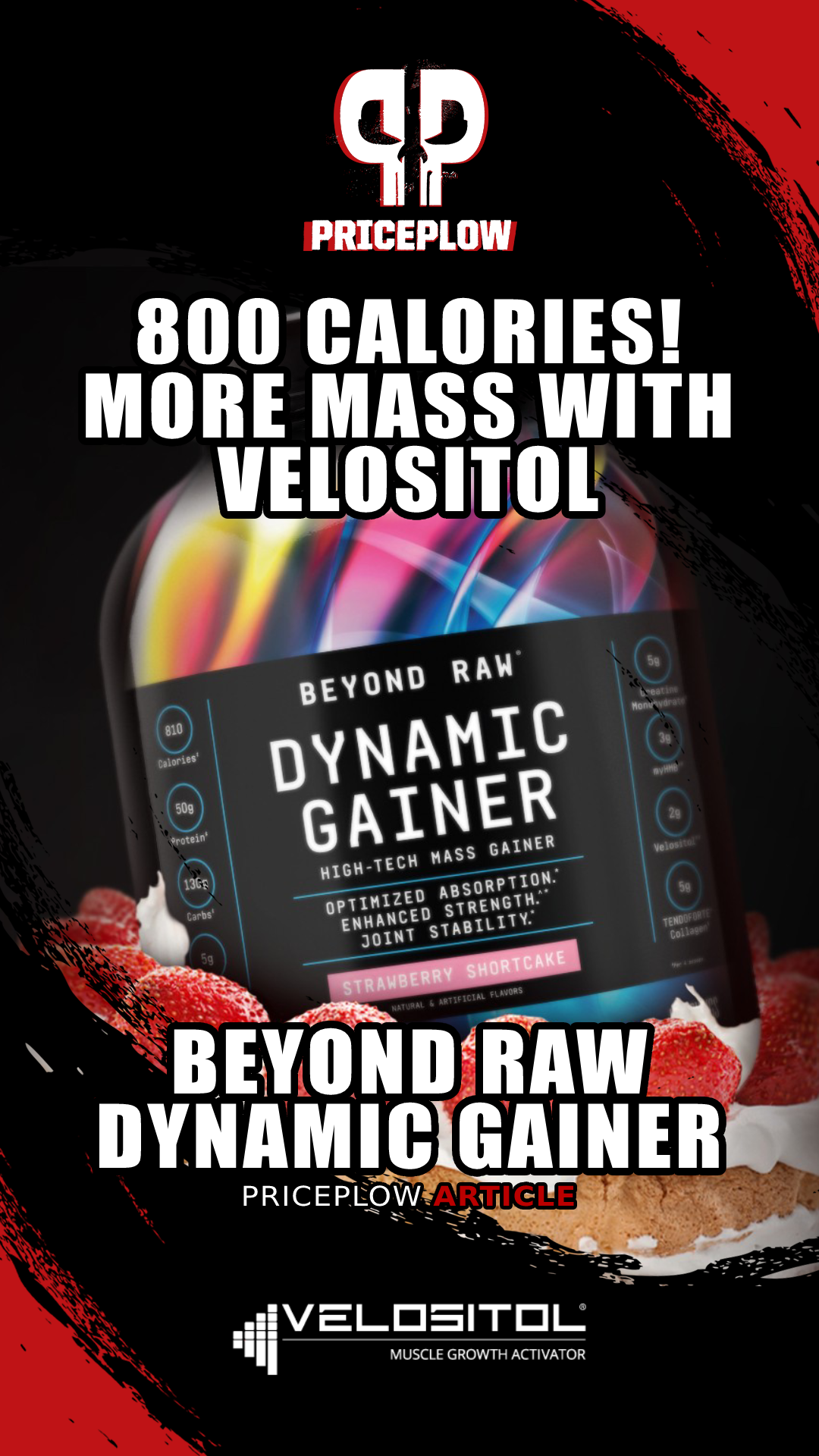

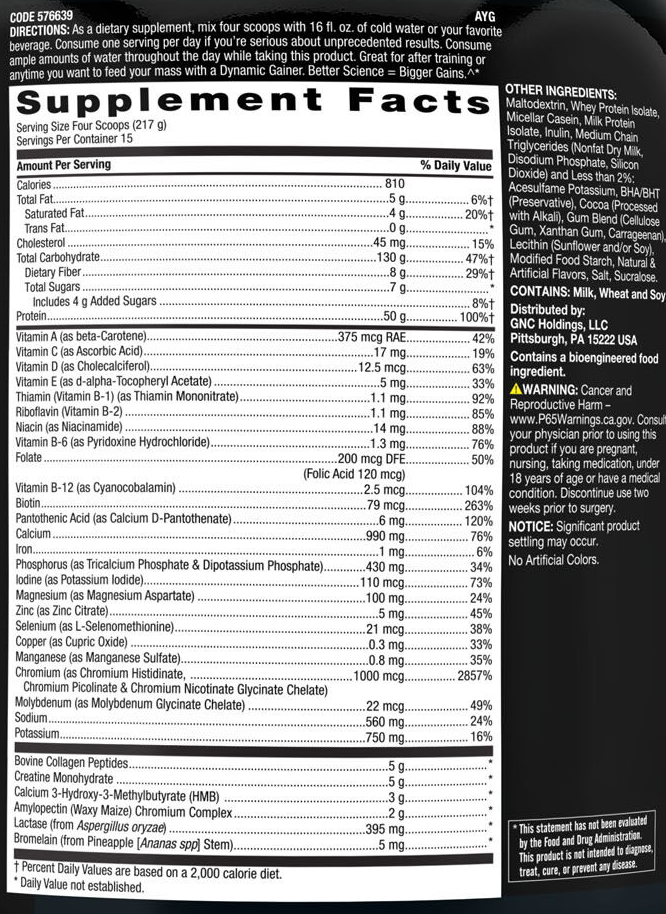


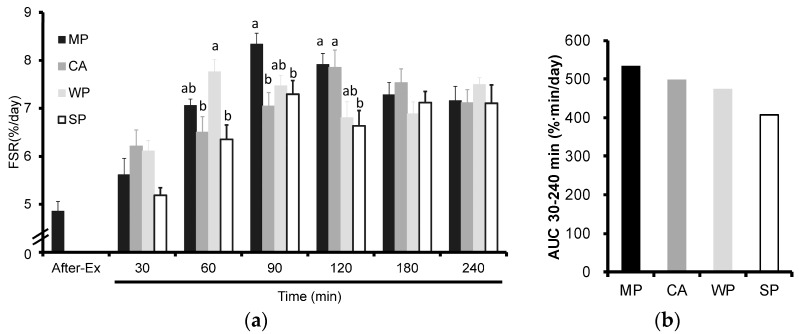
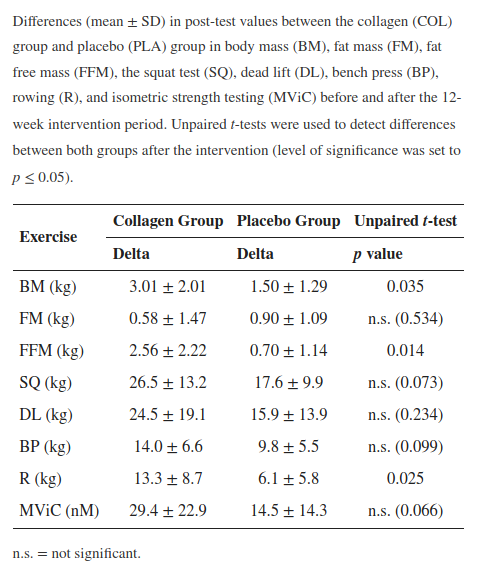


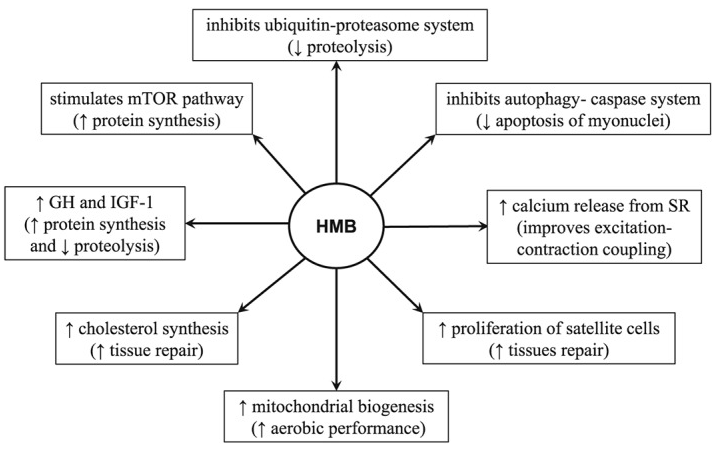

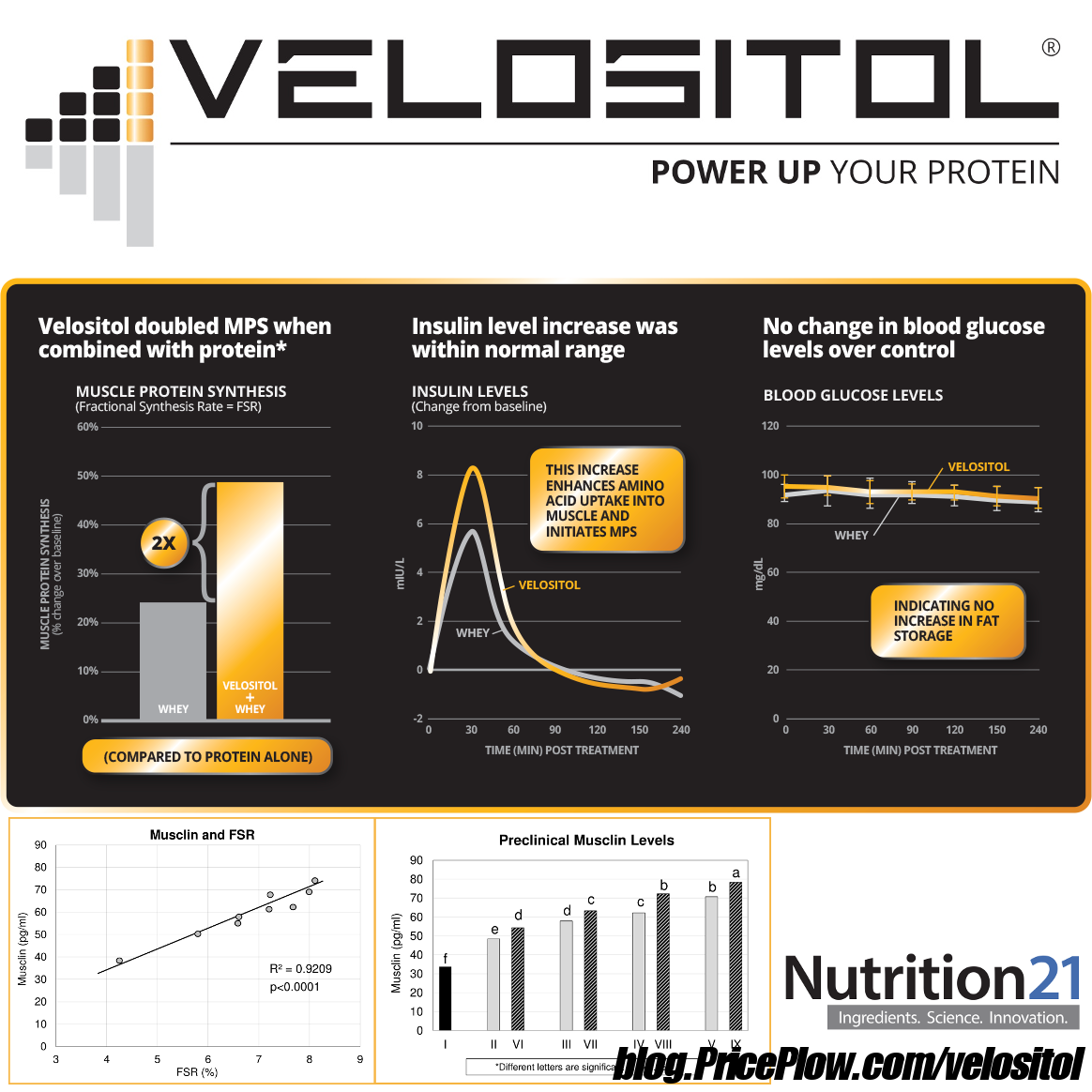
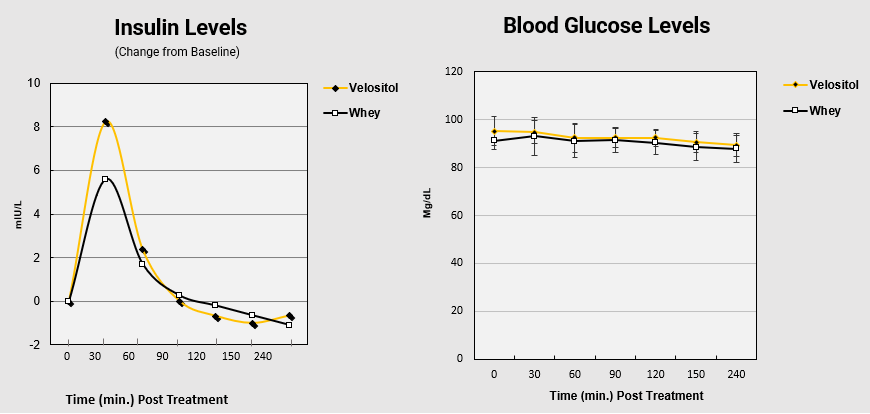
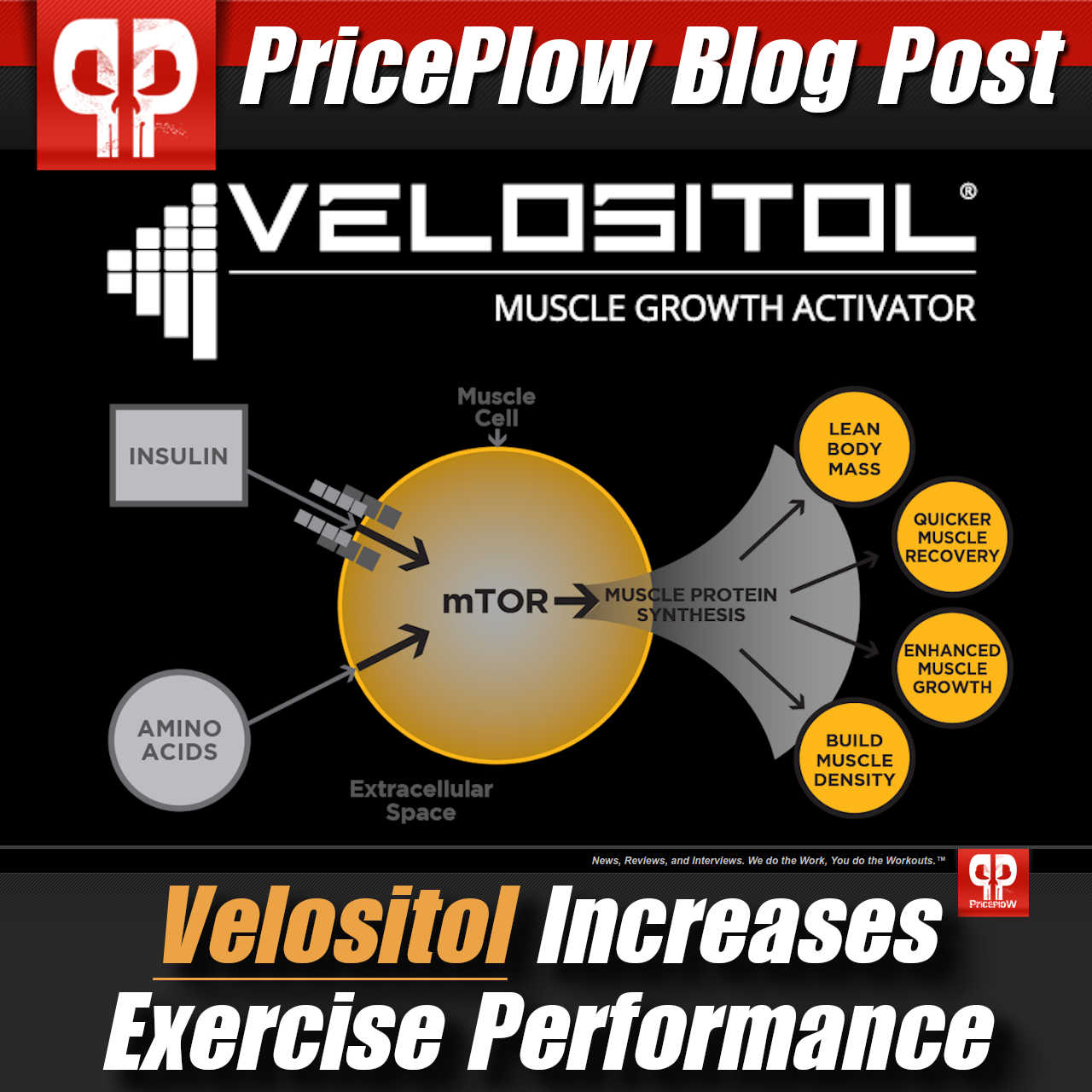

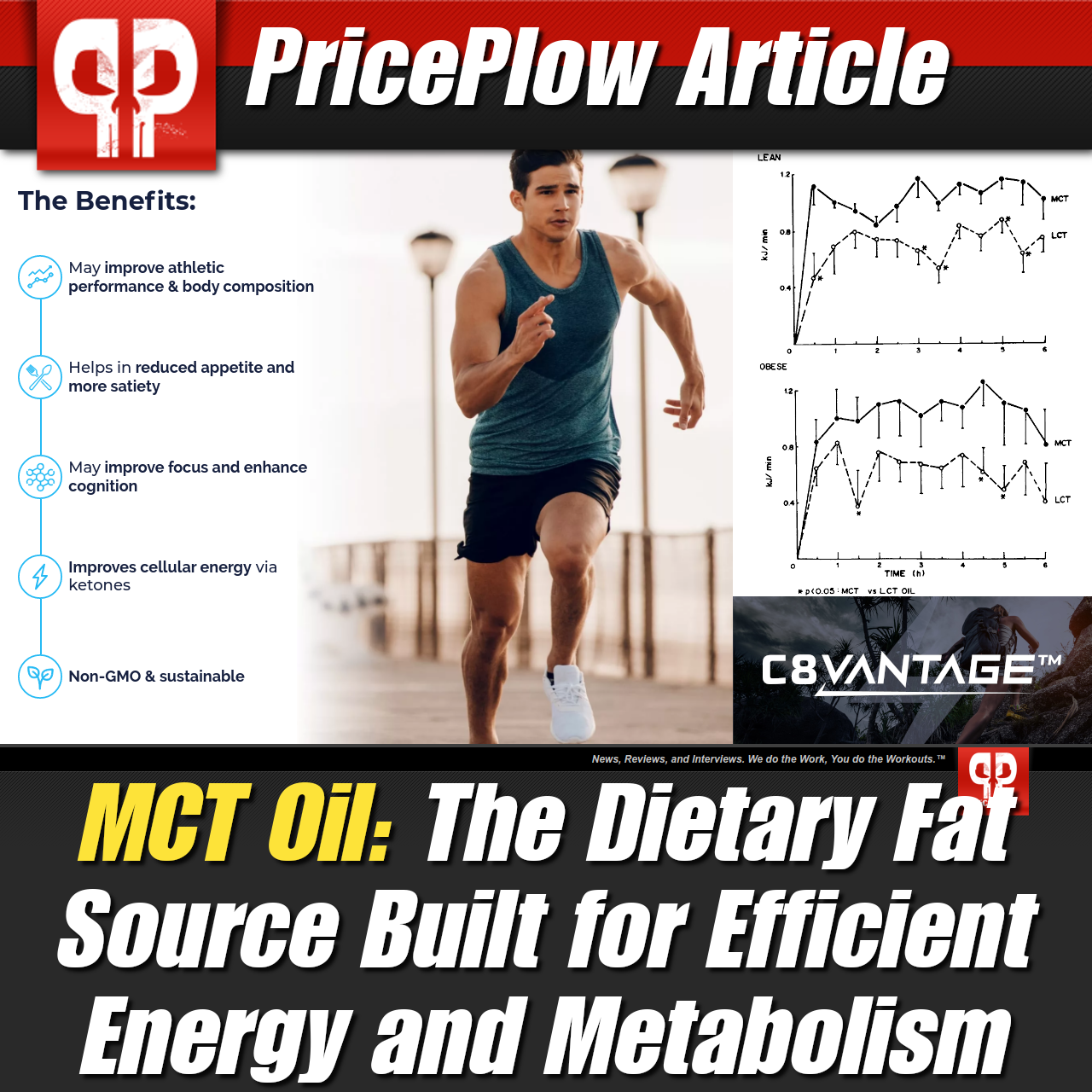
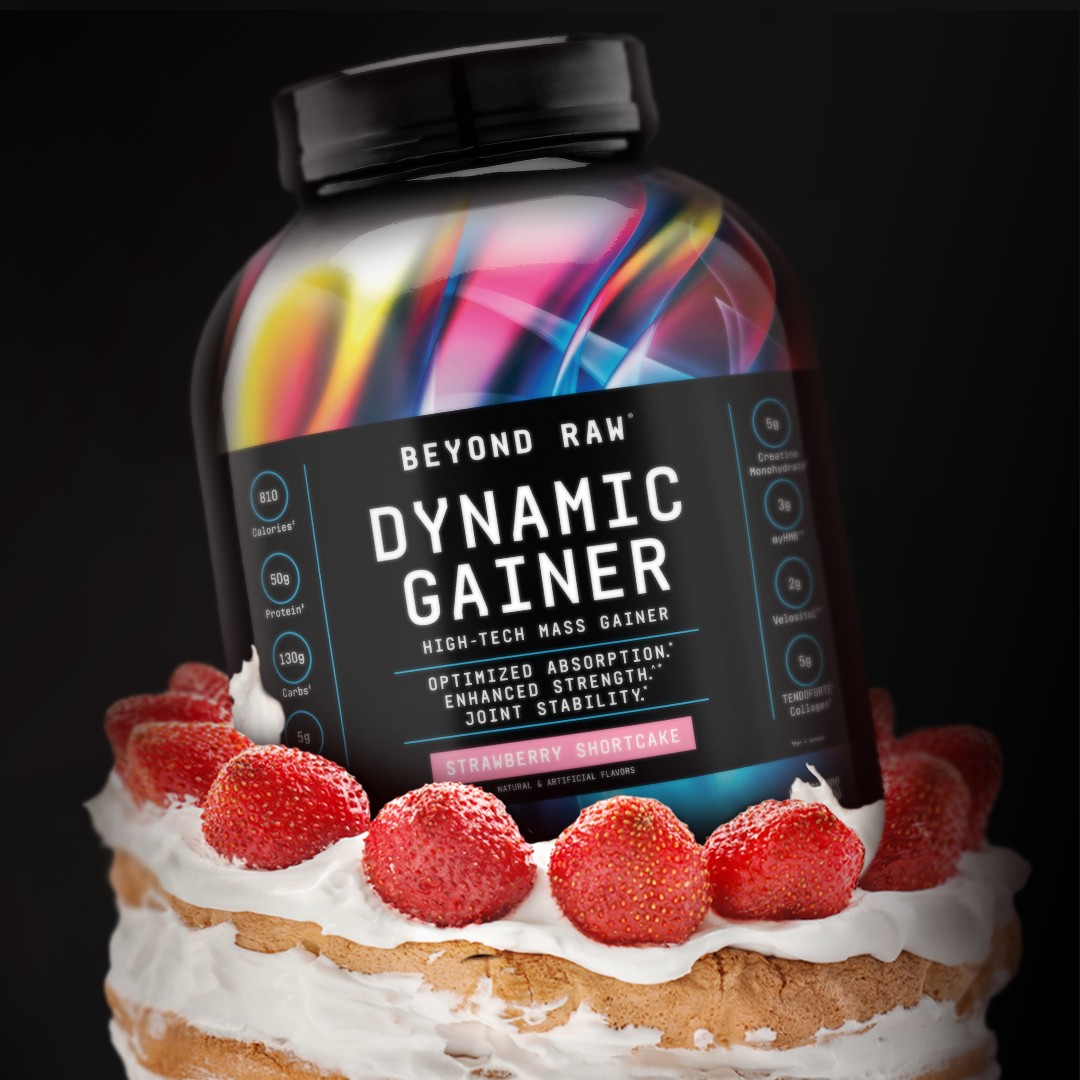
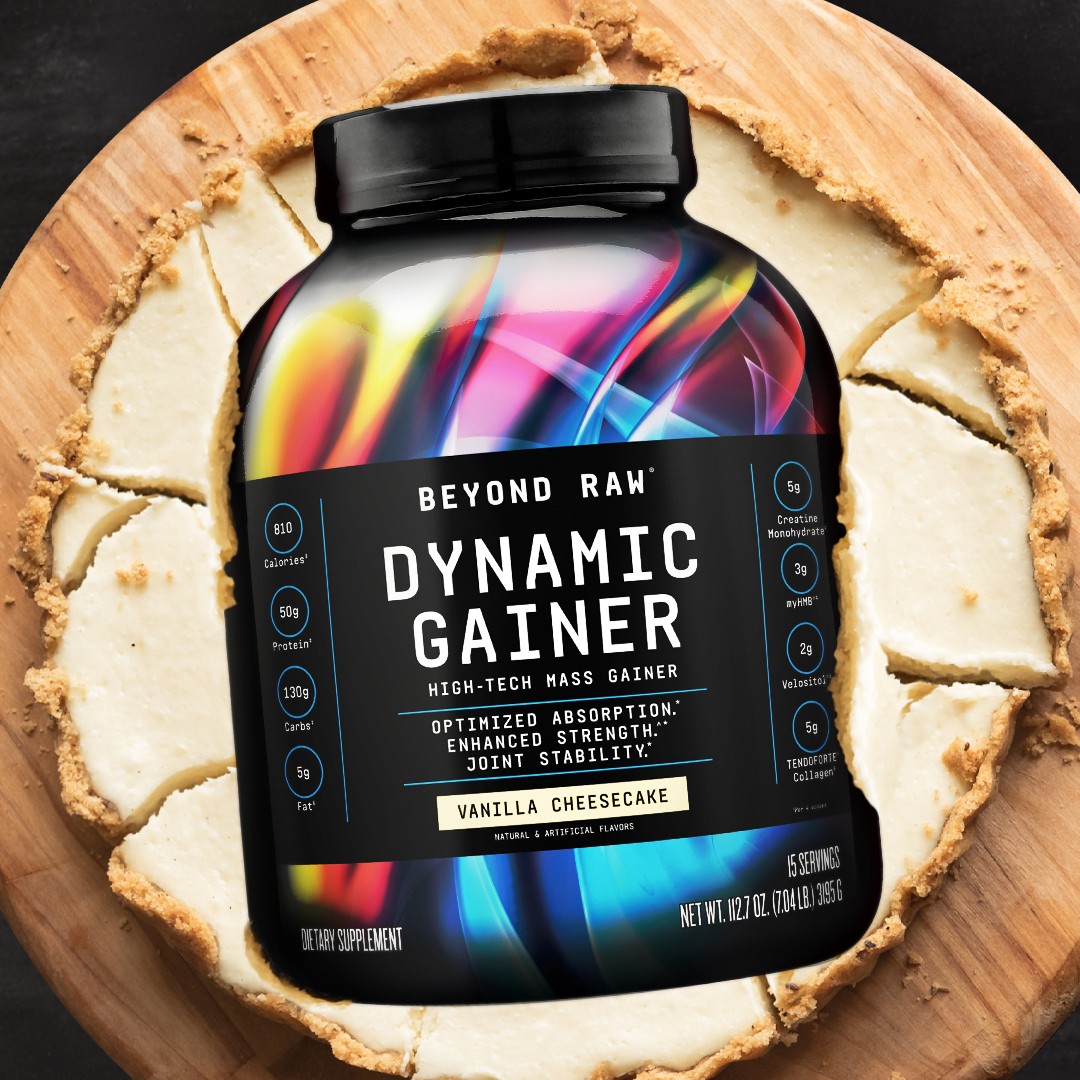


Comments and Discussion (Powered by the PricePlow Forum)